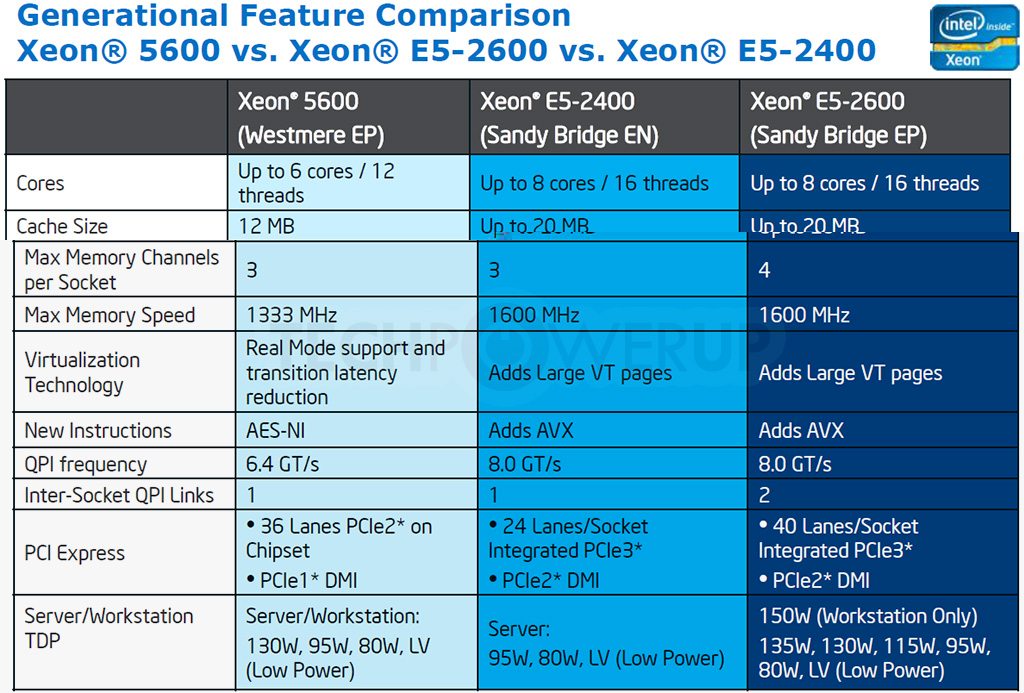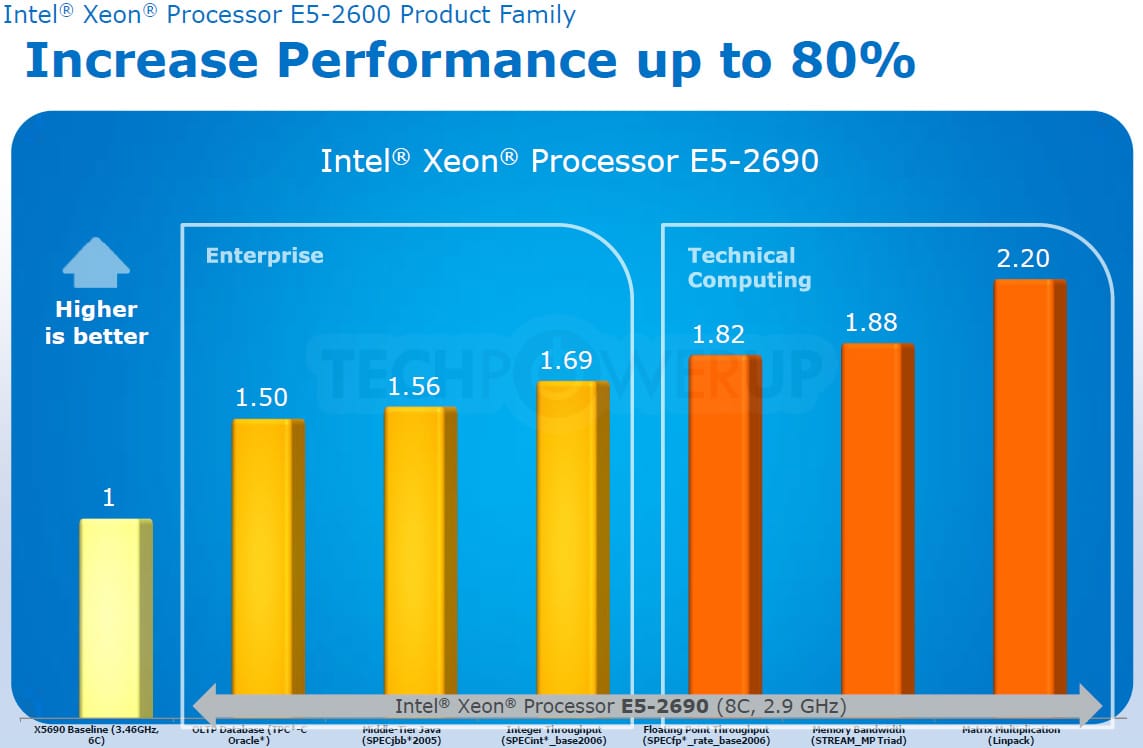Next Gen Intel Xeons benchmarked
Ryan Martin / 13 years ago
Sandy Bridge-E architecture features both Server and Desktop parts. Currently we have seen and heard the most about the desktop parts (the i7 3960X, 3930K etc) and not a lot about the server parts such as the E5-2690. Sandy Bridge-E server processors are split into two variants the Sandy Bridge-EP which is designed for high performance multi socket servers and the Sandy Bridge-EN which is designed for single slot low power servers.
Sandy Bridge-E Xeons are very similar to the i7 desktop processors. There are only a few changes such as the addition of QPI lanes to allow processors to communicate with other processors, the addition of two more cores (which all the desktop processors have but they are deactivated) and support for a huge 768GB of RAM across 8 memory channels. There is also 20MB of shared cache (like the i7 3960X) which is available to all 8 cores.
You can see more specifications from the first slide provided by Intel:

In its presentation, Intel claims up to 80 percent performance increments over the previous-generation Westmere-EP platform. A single Xeon X5690 six-core processor was set as a base line, and compared to a single Xeon E5-2690 eight-core processor. The chips were put through several enterprise performance and throughput tests, including OLTP Database (TPC-C Oracle), Middle-Tier Java (SPECjbb 2005), Integer Throughput (SPECint_base2006), Floating Point Throughput (SPECfp_rate_base2006), Memory Bandwidth (STREAM_MP Triad), and Matrix Multiplication (Linpack). The results can be seen in the below presentation:




















